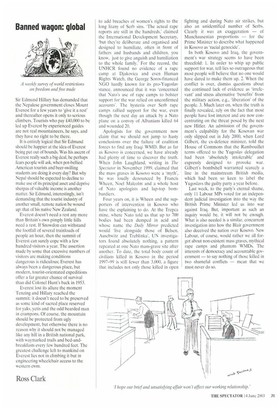Banned wagon: global
Sir Edmund Hillary has demanded that the Nepalese government closes Mount Everest for a few years to 'give it a rest' and thereafter opens it only to serious climbers. Tourists who pay £40,000 to be led up Everest by experienced guides are not real mountaineers, he says, and they have no right to be there.
It is entirely logical that Sir Edmund should be happier at the idea of Everest being put out of bounds. Was his ascent of Everest really such a big deal, he perhaps fears people will ask, when pot-bellied American tourists and beer-swilling students are doing it every day? But why Nepal should be expected to decline to make use of its principal asset and deprive sherpas of valuable income is another matter. Sir Edmund, interestingly, isn't demanding that the tourist industry of another small, remote nation be wound up: that of his native New Zealand.
Everest doesn't need a rest any more than Britain's own pimply little hills need a rest, If Snowdon can withstand the footfall of several trainloads of people an hour, then the summit of Everest can surely cope with a few hundred visitors a year. The assertion made by some that excessive numbers of visitors are making conditions dangerous is ridiculous; Everest has always been a dangerous place, but modern, tourist-orientated expeditions offer a far greater chance of survival than did Colonel Hunt's back in 1953.
Everest lost its allure the moment Tenzing and Hillary reached the summit: it doesn't need to be preserved as some kind of sacred place reserved for yaks, yetis and the odd bearded man in crampons. Of course, the mountain should be protected from ugly development, but otherwise there is no reason why it should not be managed like any hill in a British national park, with waymarked trails and bed-andbreakfasts every few hundred feet. The greatest challenge left to mankind on Everest lies not in climbing it but in engineering wheelchair access to the western cwm.
Ross Clark


































































































 Previous page
Previous page